
Review on ⚙️ SA177 Brother Side Cutter Foot - Silver by Nicole Mcleod

The video shows how to use it, even the corners. Works on Brother LB6800 and SE400. I just love it!
Failed to load media. ► Why I love it: When I got it I was in the process of designing and making a custom molded mattress pad for my husband's chair. He is so tall that when he reclines his feet always hang over the footstool and the chair always needs cushions under him from one end to the other and then another and another. I had to "tuck him away" every time he got up and sat down again, hence the custom pillow. It was always cold lying on pillows with bare legs, so I chose a nice fluffy flannel for the top layer when I made it. As I measured and designed it, I watched the flannel continue to wear down. So this sewing foot came into play. What you see in the second half of the video is how I finish the edge of the flannel portion of his pillow before sewing both sides together. The last thing I want is for it to fall apart at the seams with daily use. I consider this foot to be a must have in your sewing foot arsenal if you don't have an overlock machine. So many fabrics are so easily unraveled or frayed. With the right stitches and settings, this sewing foot allows you to create a beautiful seam while closing and protecting the edge. I personally like the look of a nicely finished edge. This foot is very easy to use once you know how to use it. So let me tell you the secret to making it work like the icing on the cake. Once you understand how it works, you can easily turn them on and off while sewing without wasting a second or even lifting the sewing foot. The secret lies in the small bar on the front, which runs across the sewing direction. I show it in my video. If you put fabric on it, the tailor will cut off when sewing. To stop cutting and just sew along the edge, simply place the fabric under this bar. Depending on how far you're sewing from the existing edge, you may or may not need to trim ¼ to ½ inch first. into the fabric along an imaginary line where the cutter would cut the new edge. This is because the needle is behind the cutter blade, so the cutter blade cannot cut the sewing start, which is in the area between the knife and the needle when you first start. But once you start, you'll see that the knife cuts just before the fabric transitions to the needle. But if you forget, you can always manually trim the excess fabric from the starting edge once you've taken it out of the machine. Watch the video again and you will better understand what I am trying to explain. It's such an easy and straightforward process once you see how it all works. You should have NO qualms about using it or not being able to get it working properly the first time. . If your presser foot is large enough to cover the bobbin plate, first make sure you have threaded the correct color for the bobbin and that it is full enough for what you will be sewing. Second, if your machine has an automatic needle threader, USE IT BEFORE INSTALLING THE FOOT. I can't stress this enough because if you try to use it with oversized and/or oddly shaped sewing feet you risk breaking it. Not a fun event. We LOVE our automatic tankers. Third, if you are using a presser foot with a component over the needle screw, always make sure it is tight before sewing. Give it a try a few times on the go, as sometimes collaborating makes it work on its own. Fourth, when attaching presser feet that large, try using the presser foot lifter button and manually raising and holding it all the way up after the normal "raised" position. This gives you more space to attach the sewing foot. If your machine doesn't have that extra clearance, simply lower the racks. Fifth and last, try making a few stitches with the handwheel first to make sure the needle has play all the way around and doesn't break. For those of you who are interested in knowing what settings I used for what I sewed in the second half of the video, I took a photo of my settings and the stitch used. ► Benefits: Allows you to sew overlock stitches without an overlock. ► Disadvantages: none. ► Suggestions for improvement: improve instructions. ► Will I buy again Yes ► Purchase decision and questions: I hope I have helped you with your purchase decision for the Brother SA177 diagonal cutters. I am not affiliated with the manufacturer, seller or any other entity associated with the product and I have no obligation to write this review. I am doing this for my own amusement and pleasure! Feel free to comment and let me know if I've helped you. If you have any questions, please post them below in the comments. I try to answer all questions promptly to the best of my knowledge and belief. Finally, follow me on Revain if you want to be notified when I post new reviews. I promise they will always be useful and never cheap junk.
- Quality construction
- Socket required
New products
Comments (0)
Top products in 🔩 Sewing Machine Parts & Accessories
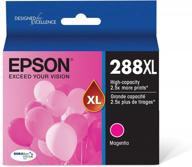
🔴 EPSON T288 DURABrite Ultra High Capacity Magenta Ink Cartridge - T288XL320-S

23 Review
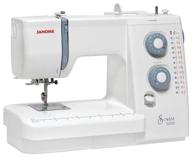
Sewing machine Janome SE 522/Sewist 525 S, white/grey

27 Review
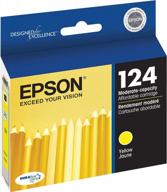
EPSON T124 DURABrite Ultra Ink Standard Capacity Yellow Cartridge (T124420) For Select Epson Stylus And Workforce Printers

21 Review

Stay Warm & Comfortable With KINGLETING Heated Seat Cushion - Pressure-Sensitive Switch, Home/Office Chair Cover

39 Review
Another interesting products

Anezus 6800Pcs Rhinestones Kit: Sparkling Accessories for Countless Crafting Projects

7 Review
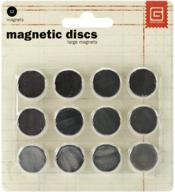
🧲 Enhanced Magnetic Large: Basic 8 Inch to 32 Inch Size for Optimal Performance

9 Review
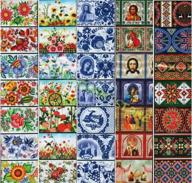
Easter Egg Decoration Kit: Lot of 5 Heat Shrink Wrap Sleeve with Flowers and Icons for 35 Eggs

8 Review

Craft Tool Quickstik by We R Memory Keepers

7 Review

